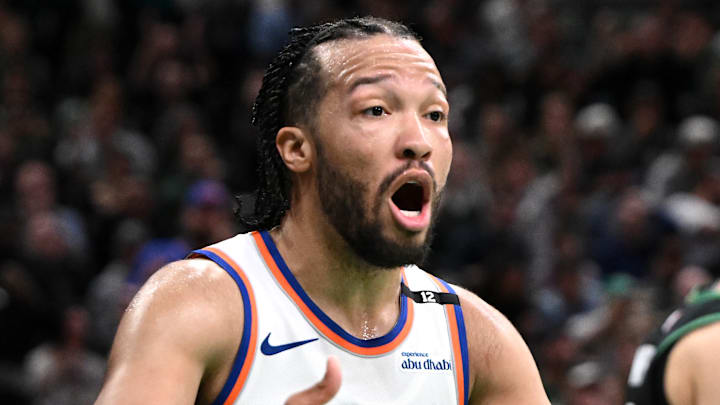Knicks are facing a major roster issue only a trade can fix
Jalen Brunson’s ability to embrace a different style of play was among the biggest concerns facing the New York Knicks entering the 2025-26 regular season. Could he operate at a faster pace? Work off the ball more? Cater to higher three-point volume? These were open questions.
Not anymore.
Much like everyone else on the Knicks, with the exception of Mikal Bridges, Brunson is still figuring out the inner workings of Mike Brown’s offensive approach. While doing so, though, he’s averaging 28.3 points and 6.1 assists on comparable efficiency to last season.
People have pointed to his scoring clip and similarly high usage (31.3) as proof that New York isn’t actually making his job easier. This is to some extent true. The Knicks are no less dependent on Brunson than they were last year, or the season before that. That is something they may have to reconcile with later in the season, as they prowl around the market for, at the very least, a viable backup floor general.
Still, the method by which Brunson gets his buckets is drastically different—and proof that he’s more adaptable than many thought.
The Knicks no longer have Jalen Brunson dominating the ball as much
As Zach Kram of ESPN notes, the Knicks have wasted little time in getting Brunson off the ball more often:
“On an individual level, nobody controlled the ball more than Brunson last season. According to GeniusIQ tracking, he led the league with 524 dribbles per game, 8.8 minutes of possession per game and 6.1 seconds per touch. But this season, Brunson's possession numbers have declined across the board; those figures have fallen to 431 dribbles, 7.7 minutes and 4.8 seconds, respectively.”
Since taking the reins of the Knicks, Brown has given everyone more license to dribble the ball up the floor. Bridges exemplifies this more than anyone else. He’s gone from averaging 52.8 touches per 36 minutes last season, to over 65.5 now.
Moving Brunson away from the ball has not just diminished the amount of time he’s on it, but it’s also lowered the share of shots he must create for himself. He averaged around 1.9 spot-up three-point attempts per 36 minutes last year. That number has jumped to 3.2 this season.
This is a big deal. Not only does it inherently drive down Brunson’s total workload, but he’s always been an efficient catch-and-shoot marksman. His 50 percent clip on standstill threes may not hold all season, but he hit 42.1 percent in 2024-25, so this is far from an anomaly.
The best of Jalen Brunson is yet to come
Things should only get better for Brunson as he becomes more familiar with the Knicks’ new system. He and the team are still struggling for stretches to strike the right balance between riding their captain, and sticking to the more egalitarian approach.
To that end, there is a give and take to New York’s ecosystem. Brunson is clearly, at times, fighting his natural impulses. He’s getting the Knicks out in transition more. He’s looking to make quicker decisions when he does have the ball. He’s more deferential going downhill.
The trade-off is worth it. His shot quality is the highest it’s been since arriving in New York. And while he’s attempting more field-goals on a per-minute basis, he’s not working as hard to generate them.
This should pay dividends in the long run. Brunson will be even more efficient, and potentially fresher. The Knicks themselves will be more versatile. And above all, the team should be better equipped to handle what awaits them in the postseason.
